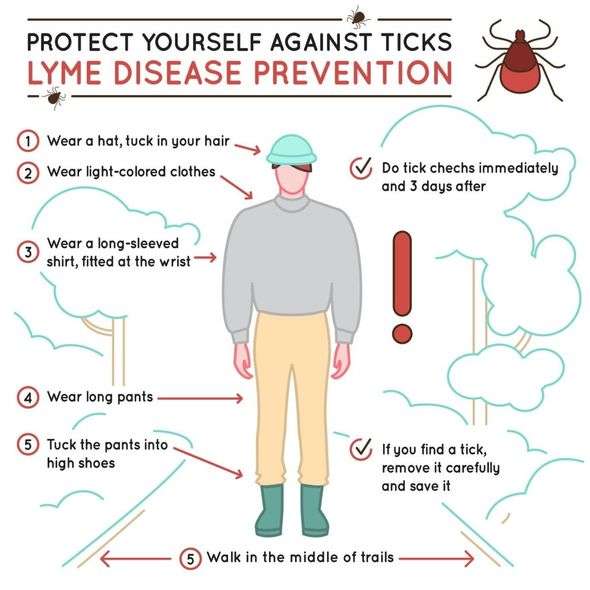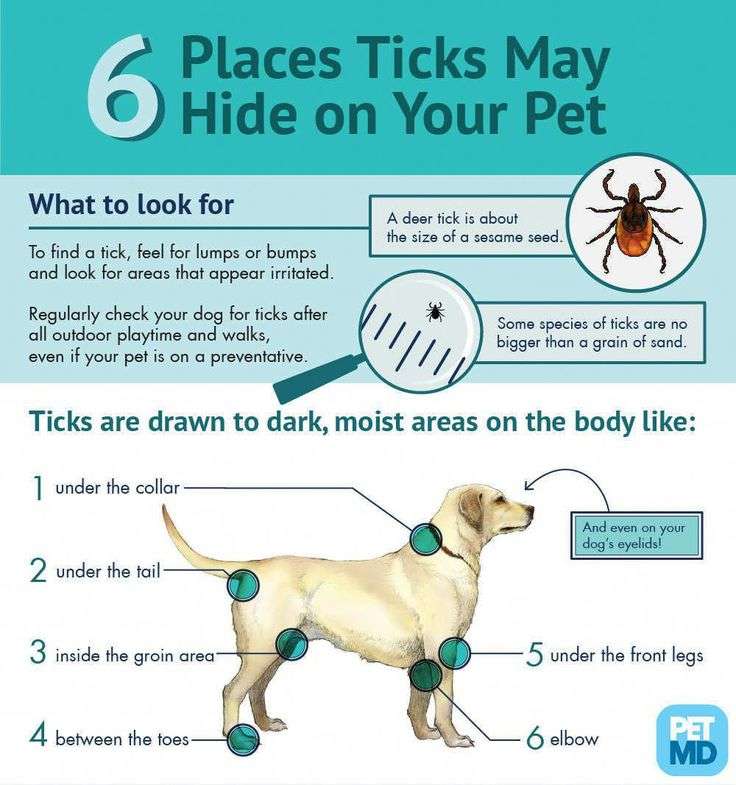Lyme Disease Tick Bite On Dog
Lyme disease, also known as Lyme borreliosis, is a vector-borne disease caused by the Borrelia bacterium which is spread by ticks in the genus Ixodes. The most common sign of infection is an expanding red rash, known as erythema migrans, that appears at the site of the tick bite about a week after it occurred. The rash is typically neither itchy nor painful.
What Is Rockymountain Spotted Fever
First, lets look at these twoprominent vector-borne disorders individually. RMSF is a very dangerous diseasecarried predominantly in North America by the American Dog Tick. Beforeantibiotics were routinely used to treat infections, the mortality rate of RMSFwas as high as 2530%. Even today, when antibiotics are commonplace, the rateremains at 35%, which is considered very high. It places RMSF as one of themost dangerous vector-borne diseases out there. A large part of the danger isdue to the generalized initial symptoms. These early symptoms are not specificto RMSF they include headaches, fever, aches, and nausea. However, theinfection can rapidly progress to a serious, life-threatening condition if nottreated promptly.
Evidence of the disease hasbeen found in every state on the mainland U.S. except Alaska. It is far moreprominent in Central and Eastern states, however, with Tennessee, Kentucky,Kansas, Oklahoma, Missouri, and Arkansas being some of the worst affected. TheRocky Mountain wood tick and the brown dog tick also carry the disease.
Accurate Testing Is Key
The fact is that many tick-borne disease symptoms closely resemble those of other illnesses, which can lead to misdiagnosis and delayed or ineffective treatment for patients. In order to make an accurate diagnosis, doctors often cant rely on symptoms alone. They need accurate, sensitive testing to pinpoint the source of disease. Learn about the tick-borne disease testing available at IGeneX, including tests for Lyme disease, Tick-Borne Relapsing Fever, and other tick borne infectious diseases.
Additional Resources
Read Also: Lyme Literate Doctors Los Angeles
What Are Symptoms Of Other Tick
Symptoms typically begin appearing within 1 to 2 weeks of an infected tick bite. In cases of:
- Anaplasmosis and ehrlichiosis, symptoms may include fever, headache, muscle pain, malaise, chills, nausea, abdominal pain, cough, confusion and occasionally, a rash.
- Babesiosis symptoms are similar to those of Lyme disease but babesiosis more often starts with a high fever and chills. As the infection progresses, patients may develop fatigue, headache, drenching sweats, muscle aches, chest pain, hip pain and shortness of breath. Babesiosis can be life-threatening to people with no spleen, the elderly and people with weak immune systems.
- Rocky Mountain spotted fever symptoms may appear within a few days of a bite. Symptoms include rash, fever, headache, abdominal pain, vomiting and muscle pain. Rocky Mountain spotted fever can be extremely dangerous due to the risk of damage to the blood vessels.
Symptoms Of Tickborne Illness
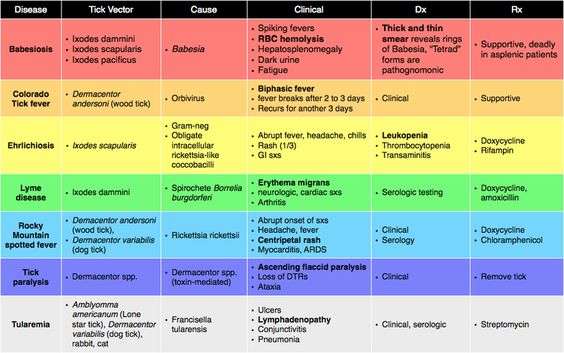
Many tickborne diseases can have similar signs and symptoms. If you get a tick bite and develop the symptoms below within a few weeks, see your healthcare provider.
The most common symptoms of tick-related illnesses include:
- Fever/chills. All tickborne diseases can cause fever.
- Aches and pains. Tickborne diseases can cause headache, fatigue, and muscle aches. People with Lyme disease may also have joint pain.
Your healthcare provider should evaluate the following before deciding on a plan for treatment:
- Your symptoms,
- the geographic region where you were bitten, and
- lab tests, depending on the symptoms and the geographic region where you were bitten.
Tick paralysis is thought to be caused by a toxin in the saliva of an attached tick. People with tick paralysis can experience weakness or paralysis that gradually moves up the body. These symptoms can sometimes resemble other neurologic conditions . Patients typically regain movement within 24 hours of removing the tick. Learn more at Tick paralysis: MedlinePlus Medical Encyclopediaexternal icon.
Links with this icon indicate that you are leaving the CDC website.
Don’t Miss: Herbs That Kill Lyme Disease
An Alphabet Soup Of Co
This article is excerpted from the Seventh Edition April 2017 of Lyme Disease and associated diseases The Basics, A plain-language introduction to tick-borne diseases, published by Lyme Disease Association of Southeastern Pennsylvania, Inc., a not-for-profit 501 corporation and an affiliate of the Lyme Disease Association, Inc. Learn more at www.LymePa.org
Editors note: Any medical information included is based on a personal experience. For questions or concerns regarding health, please consult a doctor or medical professional.
Common Mimics And Differential Diagnosis
Early RMSF has similar symptoms to many common disorders. Headache and fever may be attributed to viral syndrome, meningitis, or encephalitis. The maculopapular rash may be thought due to drug reaction, viral syndrome, scarlet fever, or Kawasaki disease. Abdominal pain associated with RMSF has been mistaken for appendicitis, cholecystitis, or gastroenteritis . Significant cutaneous necrosis or vasculitis of RMSF may be mistaken for meningococcemia or an idiopathic vasculitis such as Kawasaki disease in children.
Also Check: Over The Counter Treatment For Lyme Disease
Can Lyme Disease Be Prevented
People aren’t able to become immune to Lyme disease. So even if you’ve had Lyme disease, you can get it again. No vaccine is available currently to prevent the disease.
The FDA approved a Lyme vaccine called LYMErix in 1998. The vaccine was not 100% effective, however. The FDA still recommended preventing the disease in other ways. In 2002, the company that made LYMErix said it would no longer offer the vaccine.
To help prevent Lyme disease, follow these guidelines.
What Is Rocky Mountain Spotted Fever
Rocky Mountain spotted fever is the most serious tick-borne disease in the United States and is caused by Rickettsia rickettsii, a type of bacteria known as rickettsia. These bacteria are transmitted to humans by the bite of certain hard ticks. The two most important species of ticks that can transmit R. rickettsii in the United States are Dermacentor variabilis and Dermacentor andersoni . A third species, Rhipicephalus sanguineus has been implicated as a vector. Dogs are susceptible to RMSF, and sometimes household members of infected dogs may also be at risk for acquiring the disease. In countries south of the United States, the cayenne tick has also been shown to act as a vector of RMSF.
More recently another rickettsie has been identified as the cause of a spotted fever-like disease. Theis species, called Rickettsia parkeri, was first identified more than 60 years ago in Amblyomma maculatum ticks . Confirmation of R. parkeri as a causative agent of human disease occurred in 2002 when serological tests, immunohistochemical staining, cell culture isolation and other molecular tests positively verified infection in a patient.
Don’t Miss: What Is The Test For Lyme Disease Called
How Is Rocky Mountain Spotted Fever Treated
Doctors treat RMSF with antibiotics. Depending on how serious the symptoms are, a person might take these by mouth or get them through an IV . Most people recover within a few days.
An infection that isn’t treated right away can cause serious health problems, which can affect the brain, lungs, heart, and kidneys. Someone with these problems may need long-lasting treatment. RMSF that isn’t treated can be life-threatening.
S To Prevent Tick Bites
Avoid Tick Habitat
Ticks are most active in spring and early summer and concentrate where their animal hosts most commonly travel. This includes brushy areas along the edges of fields and woodlands or commonly traveled paths through grassy areas and shrublands. During tick season these sites should be avoided when possible and when walking on paths remain in the center to avoid brushing vegetation on which ticks perch.
Wear Protective Clothing
Long pants, long-sleeved shirts and other clothing can help exclude ticks or keep them from attaching to the skin. Ticks are usually acquired while brushing against low vegetation, so pulling socks over the bottom of the pants leg also is useful. Light-colored clothing can make it easier to find ticks that have been picked up.
Use Tick Repellents
There are a several repellents that are effective for ticks. Most commonly available is DEET but three other active ingredients are also recommended: picaridan, IR3535, and oil of lemon eucalyptus. These are applied either directly to the skin or to clothing. Repellents are most effective if applied to pants and other areas of the lower body likely to come into contact with ticks.
When applying repellents directly to the skin certain precautions should be considered:
Conduct Tick Checks
Read Also: Lyme Disease Ever Go Away
Lyme Disease Nymph Tick
The Lyme disease bacterium, Borrelia burgdorferi, is spread through the bite of infected ticks.The blacklegged tick spreads the disease in the northeastern, mid-Atlantic, and north-central United States.The western blacklegged tick spreads the disease on the Pacific Coast.Ticks can attach to any part of the human.
Rocky Mountain Fever Vs Lyme Disease: Whats The Difference
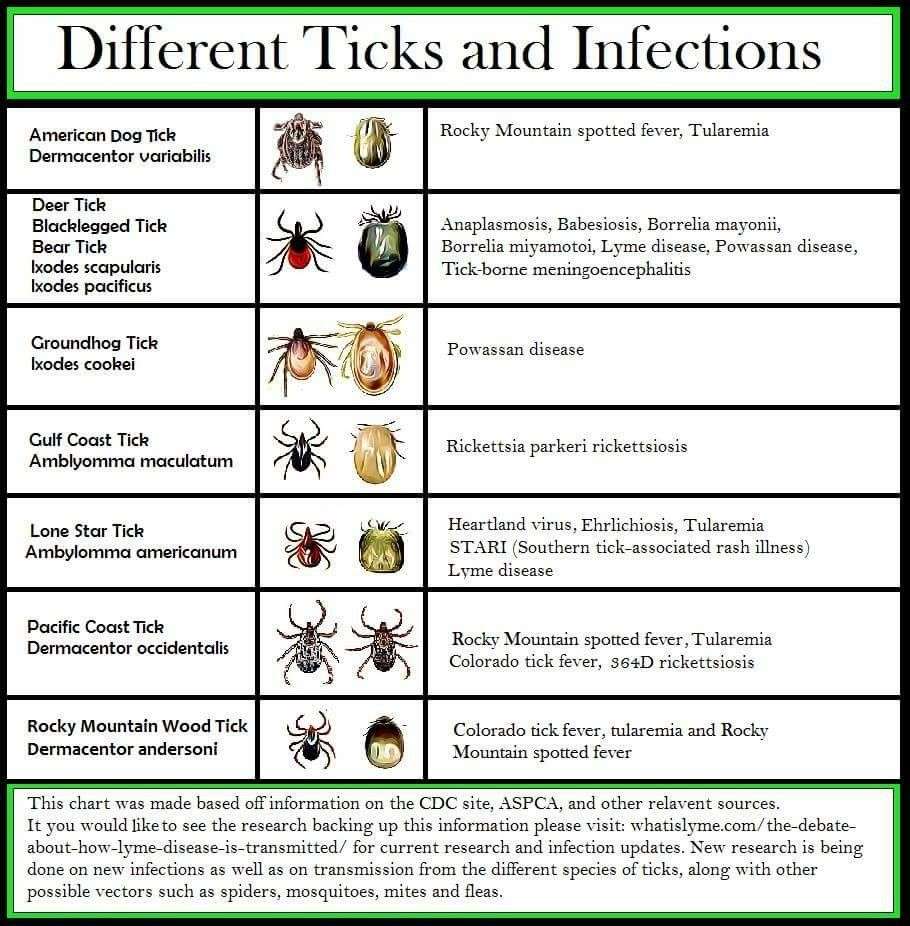
by Shalee Blackmer | Nov 11, 2021 | Blog |
Ticks feed on the blood of warm-blooded animals, such as mammals and birds. Depending on the species, the insects can carry several different types of bacteria in their stomachs, and the bacteria is transmitted to the host during the feeding process. There are over 900 species of ticks found throughout the world. While each type of bacteria ticks carry causes a different type of disease, only about a dozen types of ticks are known to transmit diseases to humans.
According to the U.S. Center for Disease Control, ticks can infect humans with over a dozen types of bacterial illnesses, two of the most common being Rocky Mountain spotted fever and Lyme disease. However, it is essential to note that a tick must be attached for at least 24 hours for enough bacteria to be transferred from the ticks stomach to the hosts bloodstream to cause illness. This is typically after the tick becomes engorged with blood from feeding.
Incidence of both Rocky Mountain spotted fever and Lyme disease are increasing across the United States. Both these illnesses present with similar symptoms, including fever, headache, fatigue, and tick paralysis. The last of these is not caused by the bacteria, but by a neurotoxin in the ticks saliva. Symptoms of tick paralysis include tingling and numbness all over the body and can sometimes result in severe respiratory distress. Paralysis is more familiar with Rocky Mountain spotted fever than Lyme disease.
Read Also: My Dog Tested Positive For Lyme Disease
Time Course Of Disease
Symptoms typically develop 16 weeks after the patient has been bitten by the tick. Symptoms may first appear or recur many months after exposure in patients who are or become immunocompromised. Subclinical cases that became more apparent have been reported when the patient underwent a splenectomy for an unrelated illness or developed a malignancy .
Is Rickettsiathe Same As Lyme Disease
This is another commonquestion, and the answer is a lot simpler. Lyme disease is caused by the Borrelia strain of bacteria,specifically Borrelia burgdorferi. Itis not a rickettsial infection. In fact, B. burgdorferi is carriedprimarily by deer ticks . These ticks do not carry anystrain of rickettsia, although other co-infections, such as babesiosis andbartonelliosis are surprisingly common.
Image by on : RMSF is traditionally diagnosed with a blood test, based on Immunoglobulin M and IgG serologic responses to the causative bacteria.
Read Also: Long Term Antibiotic Use For Lyme Disease
Cognitive Symptoms Including Memory Loss Can Stem From Tick
Certain tick-borne diseases can lead to cognitive difficulties that range from confusion and disorientation to dementia and other forms of memory loss. Powassan encephalitis, for example, is a potentially deadly viral brain infection that can exhibit signs of dementia. Patients with Rocky Mountain Spotted Fever, a form of rickettsiosis, may experience confusion, among other disease symptoms.
Patients with late-stage or chronic Lyme disease may also experience a number of cognitive symptoms, including depression and memory problems that can be misdiagnosed as dementia or even Alzheimers disease. Identifying the true cause of these symptoms can be particularly critical so that patients can receive effective treatment, particularly when they are misdiagnosed with diseases that have no known cure, such as Alzheimers disease.
Alerting your doctor to any exposure you might have had to areas and environments at risk for Lyme disease or other tick-borne illnesses can help lessen the chance of misdiagnosis and prompt your doctor to prescribe additional tests that can provide more accurate diagnosis of a suspected tick-borne disease.
How Is Lyme Disease Treated
Your healthcare provider will figure out the best treatment for you based on:
-
How old you are
Lyme disease in the earliest stage is usually treated with antibiotics for 2 to 3 weeks.
Treatment will also be considered based on these and other factors:
-
If you are bitten by a tick that tests positive for the bacteria that causes Lyme disease
-
If you are bitten by a tick and have any of the symptoms
-
If you are bitten by a tick and are pregnant
-
If you are bitten by a tick and live in a high-risk area
Also Check: How Do You Contract Lyme Disease
Lyme Disease Tick Bite Looks Like
Dogs vaccinated against Lyme disease should still be checked for ticks as the parasites can attach to other hosts, including people. If you find a tick attached, you need to use tweezers to grasp the tick as close to the skin as possible, then perpendicularly pull away from the skin, wash the area with soap, and apply topical antiseptic.
Key Physical Exam Findings And Diagnostic Features
The key physical exam finding of RMSF is the maculopapular, and then often vasculitic, rash starting on the distal extremities.
Laboratory tests are generally not revealing with the total leukocyte count usually normal or slightly elevated with increased numbers of immature neutrophils. Mild thrombocytopenia occurs in about 60% of patients, and half of patients may have mild hyponatremia or transaminitis. Thrombocytopenia is thought due to increased destruction at the areas of pathogen-induced vascular injury. Other laboratory abnormalities include increases in serum urea nitrogen or creatinine and bilirubin. A prolonged prothrombin or partial thromboplastin time can also be seen. If analyzed, cerebrospinal fluid may show a predominance of lymphocyte or monocyte pleocytosis and increased protein concentration . Azotemia can be present and is likely due to hypovolemia.
Serology testing using indirect fluorescent antibody testing to RMSF Rickettsia can be performed. Typically IgG and IgM antibodies do not appear until 710 days after the onset of symptoms, and therefore IFA testing cannot be used in the decision to treat in the first few days of the illness.
Recommended Reading: Where Can You Get A Lyme Disease Test
Signs And Symptoms Of Tick
The signs and symptoms of tick-borne disease vary among individuals and differ according to the infecting agent. In general, a person should consider consulting a health care provider whenever he or she experiences a sudden high fever, severe headache, muscle or joint aches, nausea, vomiting or diarrhea. If these symptoms occur following a tick bite, or even after exposure to a tick habitat, the health care provider should be informed of this fact. Another possible sign of tick-borne disease is a rash or pus-filled wound that appears at the site of a tick bite, or a spreading rash that follows a tick bite or exposure to tick habitat.
What Is The Treatment For Tick
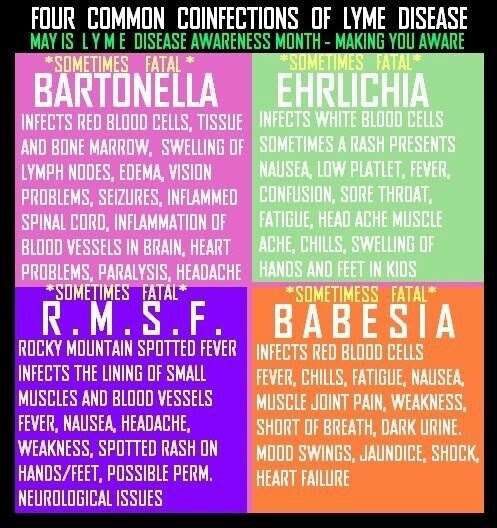
- Lyme disease: Patients treated with appropriate antibiotics in the early stages of Lyme disease usually recover rapidly and completely, says Dr. Moscovitz. Antibiotics commonly used include doxycycline, amoxicillin or cefuroxime axetil. Patients with Lyme disease may require follow-up with a specialist, such as a rheumatologist, to treat chronic aches and pains that are due to inflammation.
- Anaplasmosis, ehrlichiosis and Rocky Mountain spotted fever: Doxycycline is the first line treatment for adults and children of all ages.
- Babesiosis: Combination therapy with atovaquone and azithromycin is most commonly recommended for treatment of mild to moderate babesiosis. Treatment is usually continued for 7 to 10 days. A combination regimen of oral clindamycin and quinine has also been proven effective, but the rate of adverse reactions is significantly higher with this combination.
You May Like: Deer Ticks Carry Lyme Disease
Does A Tick Bite Cause Immediate Danger
If a tick is only on you two or three hours, it probably won’t even get a chance to attach and start feeding, says Dr. Moscovitz.
Once a tick attaches, it starts feeding and stays on you for about 12 or 18 hours and then falls off when its full.
A tick has to be attached for a long timemore than 10 hoursto transmit bacteria. A tick that looks flat and small probably hasn’t eaten, notes Dr. Moscovitz.
Rocky Mountain Spotted Fever Vs Lyme Disease Differences
Rocky Mountain spotted fever is a bacterial infection that is transmitted by a tick. The states which are most usually affected are Oklahoma, Arkansas, North Carolina, Missouri, and Tennessee.
The symptoms develop within the first few days of a tick bite, but, some people may not experience symptoms for up to 14 days. RMSF is characterized by a sudden onset of moderate to high fever, severe headache, deep muscle pain, fatigue, rash, and chills.
Lyme disease is a bacterial infection which can be spread to humans by infected ticks . It can affect the joints, heart, skin, and the nervous system. It is the most common vector-borne infection in the US.
Read Also: Antibiotics Used For Lyme Disease
How Is Lyme Disease Diagnosed
Lyme disease is difficult to diagnose because symptoms are not consistent and may mimic other conditions. The primary symptom is a rash, but it may not be present in up to 20% of cases.
Diagnosis for Lyme disease must be made by a healthcare provider experienced in recognizing Lyme disease. Diagnosis is usually based on symptoms and a history of a tick bite. Testing is generally done to confirm the diagnosis and rule out other conditions. This may need blood and other lab tests.
Research is underway to develop and improve methods for diagnosing Lyme disease.
The symptoms of Lyme disease may look like other medical conditions or problems. Always talk with your healthcare provider for a diagnosis.
